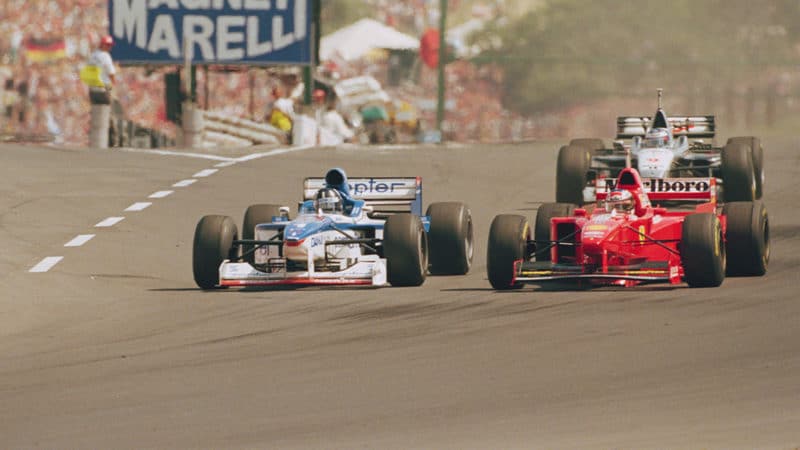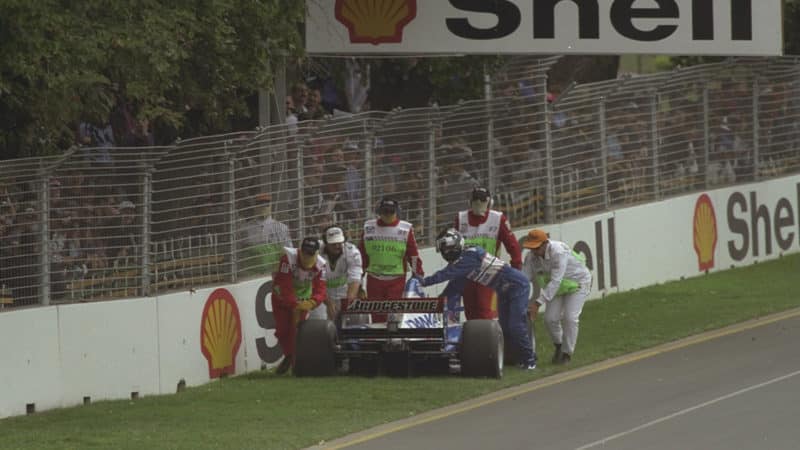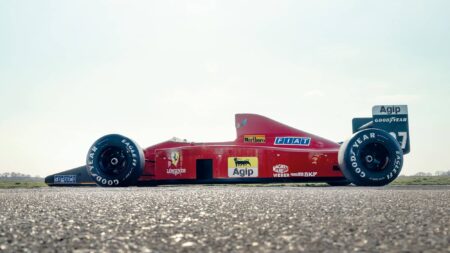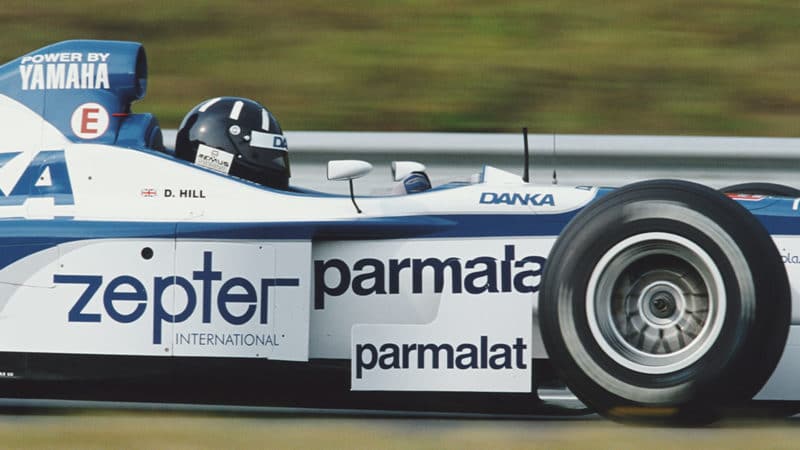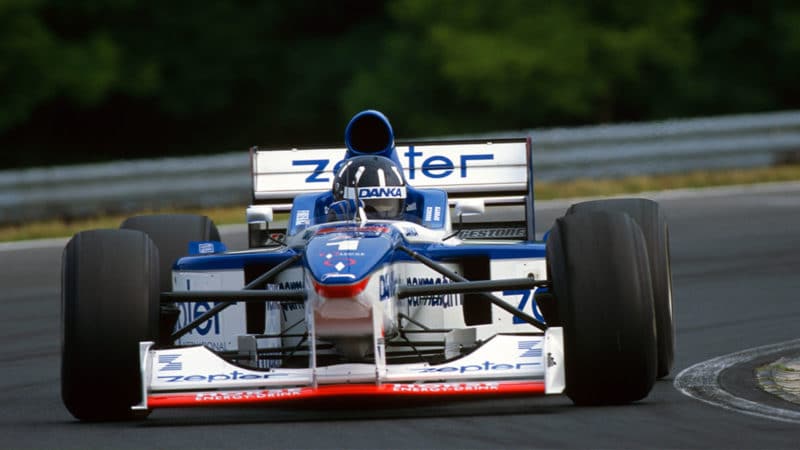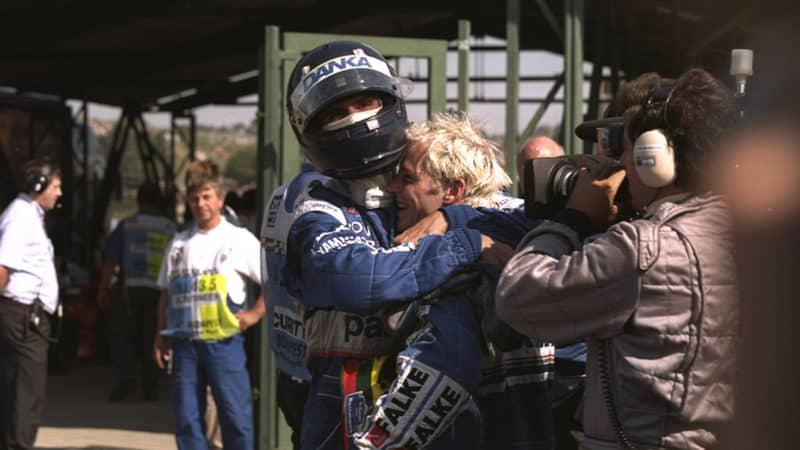Barnard came in for the Canadian GP – the design guru had immediately begun to ring the changes, not just in the factory’s work processes but also on the current car ‘97 itself.
“The first thing that struck me was that the airbox intake was too small,” he says. “So we had to cut the roll hoop off the chassis and put a whole new one on to increase the air intake, which picked up about three or four kilometres-an-hour top speed.
“We also made some changes suspension-wise also and more on the weight distribution.”
Once Barnard had deduced what the car’s main issue was, himself and the team were able to push on with more alterations.
“When I initially started, we just couldn’t get the front to work – some of that was in the tyre,” says Barnard – Arrows were on of just four teams using Bridgestones that year, along with Stewart, Prost and Minardi.
“To get over that, I had to put more load on the front, and that meant changing the aero balance, changing the spring set-up, the ride heights, quite big alterations from front to back.
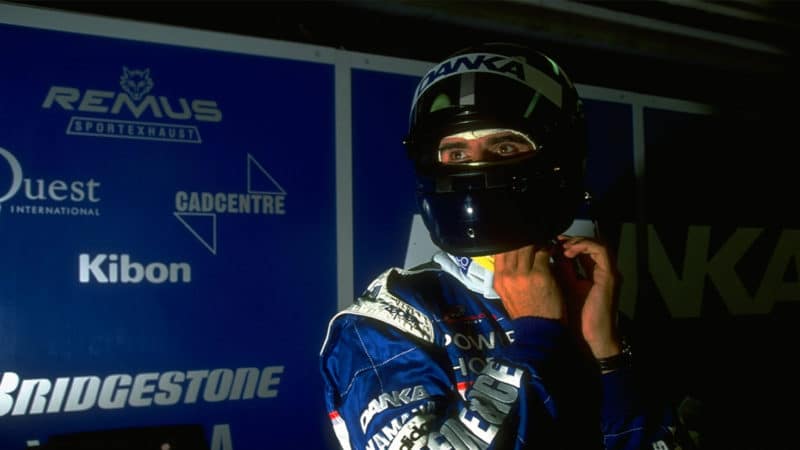
Questions lingered over Hill’s motivation
Mike Cooper /Allsport/Getty Images
“Then I started adding weight to the nose of the car, which for me normally would be an absolute ‘no-no’, because you’re increasing your polar moments by throwing weight out the front, but it helped to get a bit of temperature in the front tyres.”
Combined with changes on race weekends, all the modifications started to pay dividends at Hill’s and the team’s home GP.
Though everyone remembers Hungary as Arrows’ ‘bolt from the blue’, Barnard believes it was Silverstone that was the real key moment for the team.
“I started listening in on the radio with Damon, [who was] talking to race engineers,” remembers Barnard. “I jumped in at that point, because I could see that we needed to change on the set-up [of the car].
“We made some, and we shot up the order.”
Hill still only qualified 12th for that year’s British GP, but a late retirement for Shinji Nakano in the race promoted him into the final points-paying position – he and Arrows were up and running at last.
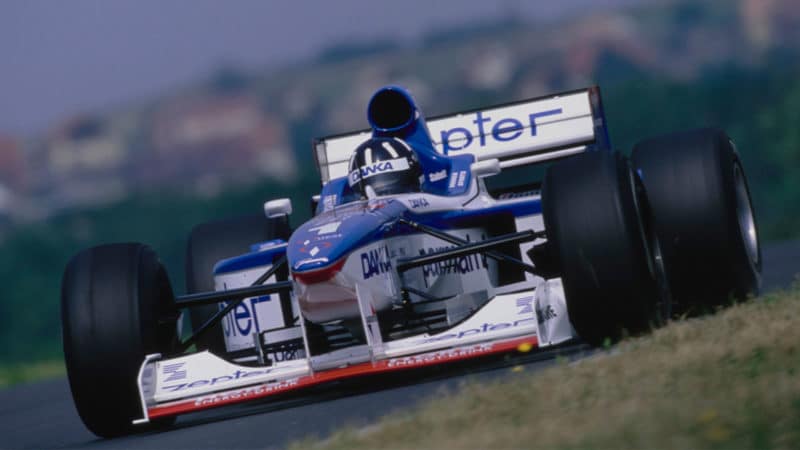
Arrows car started to improve after changes from Barnard and co – nowhere more so than Hungary
Darren Heath/Getty Images
There had been rumours that Hill was struggling to muster the will to go on in such a miserable defence of his championship crown, but Barnard found him to be the right man for the job – when he was in the mood.
“I think some times he was more motivated than others,” says Barnard. “Some races you could see there was it was there, whilst at others you felt like, ‘Come on, Damon, there’s three or four more places we can get on the grid here if you really give it one!’ – it seemed like the motivation just wasn’t there, but that just a feeling.
